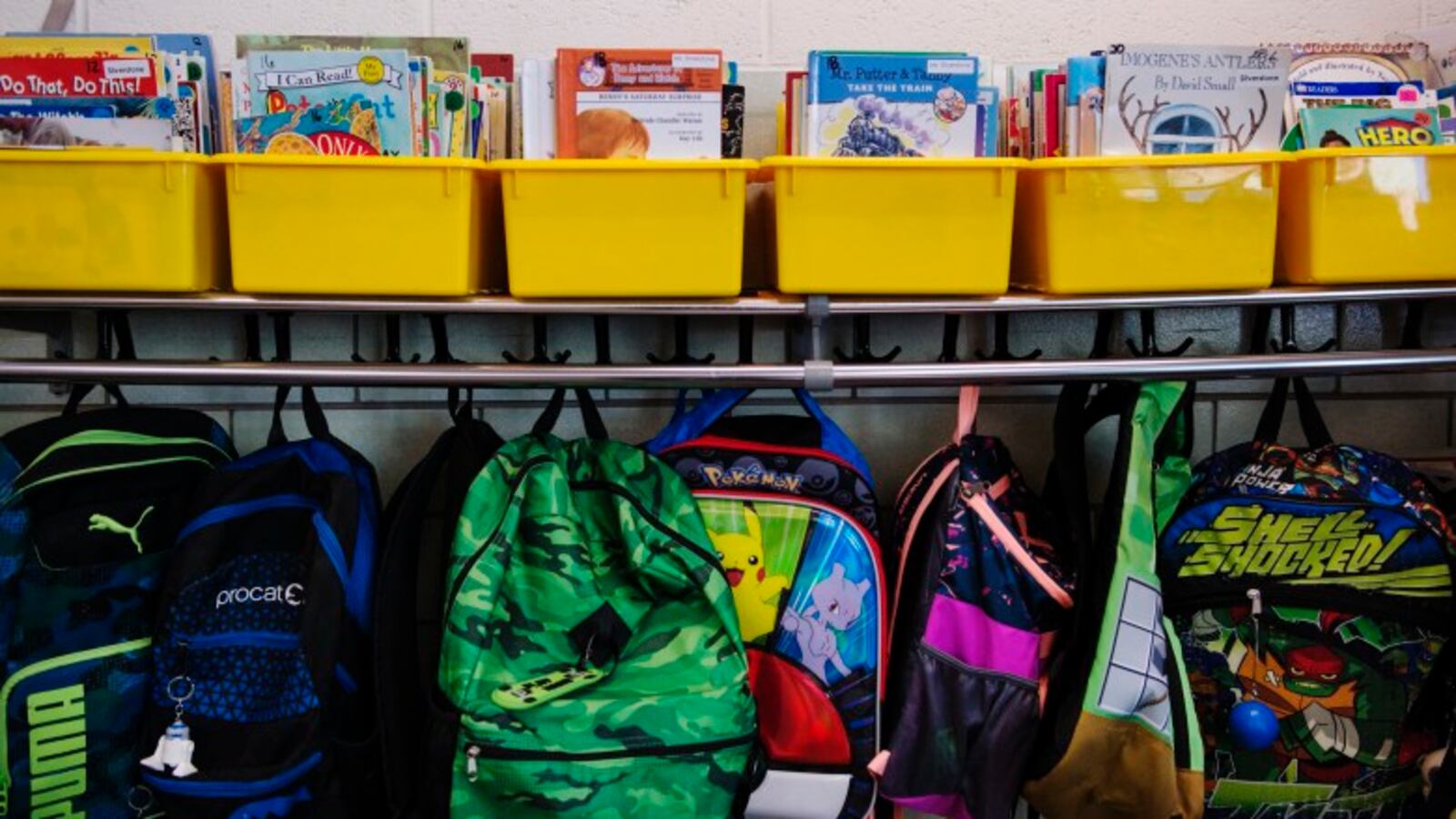Colorado’s public school enrollment nudged up this year — propelled by changes in full-day kindergarten, according to official numbers released Thursday.
Statewide enrollment this year grew by less than 0.2%, with 913,223 students enrolled this year — 1,687 more than in 2018-19. It’s a slightly bigger increase than last year.
Much of that is due to more students enrolled in full-day kindergarten, an expected development with the state making it free this year for all students.
Thursday’s data also show that 11.6% of public school students, or 106,238 students, were identified as students with special needs. That’s an increase of 4,157 students compared with the previous school year. Across districts, that change was mixed.
Slightly more students have been identified as homeless, and fewer are getting home-schooled.
Here are some of the bigger takeaways:
Several districts are losing students.
Among larger and Front Range districts, Adams 14 suffered the biggest percentage decline in students. This school year, Adams 14 enrolled just over 6,600 students, or 6.4% fewer than the previous year when it had more than 7,000. The district has been losing students for years. Since the fall of 2014, Adams 14 has had a nearly 13% drop in enrollment.
Some of the other districts that had big enrollment losses this year include Sheridan, Littleton, Pueblo City 60, Westminster, and Adams 12.
Some of the districts, including Adams 14 and Pueblo City 60, have had to answer recently to the State Board of Education for low academic performance. At the same time, neighboring districts like Mapleton, which border Adams 14, and Pueblo 70, which borders Pueblo 60, have increased enrollment. Colorado law allow families to enroll in districts outside of where they live. Mapleton was actively recruiting Adams 14 students last year.
As expected, full-day kindergarten enrollment spiked.
The number of Colorado students enrolled in full-day kindergarten jumped by nearly 12,000 students this year, from about 50,000 to nearly 62,000. The 24% increase was no surprise given Gov. Jared Polis’ successful effort last spring to get the legislature to pay for free full-day kindergarten statewide.
Three districts each added more than 1,000 full-day kindergarten students this year, including Cherry Creek with 2,958 more; Douglas County with 1,286 more; and Boulder County with 1,257 more. Several other districts added more than 500 new full-day students, including Adams 12, Littleton, St. Vrain, Jeffco, and Mesa County Valley District 51.
The number of half-day kindergarten slots shrunk accordingly, with only 2,000 Colorado kindergarteners now attending half-day classes, down from more than 13,000 last year.
The number of students who are identified as learning English as a second language decreased significantly.
This year data shows districts identified 13.5% of students as English language learners. They total 123,248, a drop of 2,229 students from last year.
Looking at district level data, Denver schools may have contributed to a significant portion of that decrease. The Denver district has 28,753 English learners this year — a decrease of 1,415 from last year’s 30,168.
Nadia Madan Morrow, Denver’s executive director of English language acquisition, said that anecdotally district officials believe Denver’s cost of living is driving away immigrant students and families.
That may be a factor in why some of Denver’s neighbors — Aurora, Cherry Creek and District 27J in Brighton — saw increases in the number of English learners.
In one case, though, Madan Morrow said a Denver school that served a large population of immigrants from Nepal learned that much of that community has moved to Wyoming.
The high cost of living also means that refugee resettlement agencies are looking elsewhere to place their clients, she said. Another factor is that new federal policies and politics may be decreasing the number of immigrants, she said.
Statewide, the number of students in poverty is holding steady, but some districts are seeing big changes.
This year, 371,804, or 40.7% of all public school students qualified for subsidized lunch, a measure of poverty. That’s an increase of 478 students, or 0.1 percentage points.
But some districts saw big swings. In Aurora, for example, the number of students who qualify for subsidized meals jumped to 29,800, or 74% of all its students, up from 67% in 2018-19. No other large or metropolitan area district had such a drastic change. Westminster had a drop of 3 percentage points in the number of students who qualify, and so did Greeley.
In Denver, this year’s change wasn’t as big. The proportion of students who qualify for free and reduced price lunch dropped from 65% to 64%. The city has seen the largest decline in the metro area since 2014, when 70% of all students qualified for subsidized meals.
In the same period, the Adams 14 district also had a big change, but in the opposite direction. It went from 72% of students qualifying for subsidized lunch to 83% this year.
Online enrollment grew this year — though some observers worry.
About 22,500 students are enrolled in online education programs this year, a nearly 6% bump over last year’s online enrollment of 21,200. More than half of the increase — about 800 students — came from GOAL Academy, a charter high school that offers online programming to nearly 5,000 students from around Colorado. The school is authorized through District 49 in the Colorado Springs area.
Despite continued growth in the online sector, some education leaders are wary of the trend. A 2018 report from the Denver-based advocacy group A Plus Colorado found that students in online schools do worse even than students in low-performing brick-and-mortar schools, and that when districts open online schools, it pulls down their overall performance.
While a 2016 Education Week story labeled GOAL Academy a “virtual mess,” its state rating improved in 2019 — from the second-highest “improvement” rating to the highest “performance” rating.

